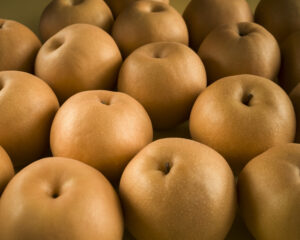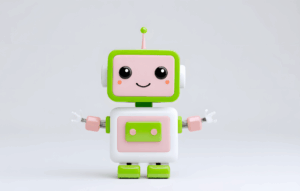When most people think about plant-based diets, they imagine lush fields of kale, vibrant farmers markets, and a world where no animals are harmed. After all, veganism is often embraced as a way to minimize animal suffering and live more ethically. But there’s a side of the story that’s rarely talked about, and it might make you rethink just how “bloodless” those plant-based meals really are.
It’s called the death per calorie argument, and it highlights a complicated reality: large-scale agriculture, especially monocropping, which covers roughly 80% of arable land worldwide, results in countless unintended animal deaths. In other words, while avoiding meat might seem like the most compassionate choice, modern farming practices that support plant-based diets also have a significant and often invisible impact on wildlife.
What Is the Death Per Calorie Argument?
The “death per calorie” concept is pretty simple: it’s the idea that, in trying to feed humans, animals die, and the number of animals killed can be roughly related to how many calories a farming system produces.
Let’s break it down.
When a cow is slaughtered for beef, that’s one death that provides a lot of calories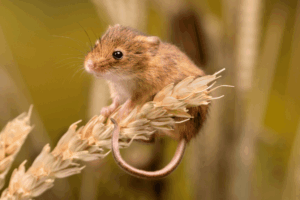 and hundreds of meals. When fields are tilled, sprayed with deadly chemicals, harvested, and otherwise managed to grow crops like wheat, soy, or corn, countless smaller animals such as mice, rabbits, birds, insects, and reptiles are inevitably killed in the process. This includes deaths from:
and hundreds of meals. When fields are tilled, sprayed with deadly chemicals, harvested, and otherwise managed to grow crops like wheat, soy, or corn, countless smaller animals such as mice, rabbits, birds, insects, and reptiles are inevitably killed in the process. This includes deaths from:
- Tractors (animals crushed during tilling and harvesting)
- Pesticide and herbicide use (poisoning non-target species)
- Habitat destruction (eliminating food, shelter, and water sources)
- Predator-prey imbalance (fields can alter ecosystems, leading to starvation or overpredation)
It’s not just in agriculture either. Think about logging, an act that most people already recognize. When forests are cleared for timber, homes for birds, mammals, insects, and amphibians are wiped out. Food chains are broken. Water cycles are disrupted. Many creatures don’t survive the destruction of their habitat. Farming large monocrops operates under the same principle: when the land is stripped and reshaped for human use, it costs animals their lives, even if the final product is a veggie burger instead of a steak.
These deaths are harder to see than a slaughterhouse video, but they happen on an enormous scale, and they’re essential to understanding the true impact of our food choices.
How Monocropping Drives Wildlife Death
Monocropping is the practice of growing a single crop over a vast area. Think of endless fields of soybeans, corn, or wheat, which make up the backbone of much of the modern vegan diet.
In fact, soybeans, wheat, and corn account for over 70% of global cropland according to data from the Food and Agriculture Organization (FAO), while soybeans in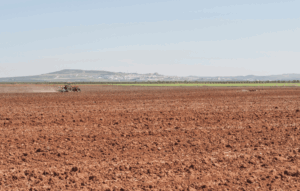 particular account for the primary supply of the global plant-based protein market. They are the primary ingredient in many vegan substitutes, including plant-based meats, cheeses, milks, and protein powders. Corn and wheat are also heavily used in processed vegan products, from snack foods to meat alternatives.
particular account for the primary supply of the global plant-based protein market. They are the primary ingredient in many vegan substitutes, including plant-based meats, cheeses, milks, and protein powders. Corn and wheat are also heavily used in processed vegan products, from snack foods to meat alternatives.
While monocropping may be considered “efficient” for farmers, it’s disastrous for local ecosystems. It wipes out biodiversity, leading to soil degradation, waterway pollution, loss of insects like bees and butterflies, and starvation and death of native mammals, reptiles, and birds.
When natural habitats are converted into industrial farmland, the resident animals don’t just “move somewhere else.” Many are killed during the conversion process. Others starve because their food sources are gone. Some are poisoned accidentally when pesticides are sprayed on crops.
For example, a study published in the Journal of Ethology in 2003 estimated that at least 100 mice per hectare are killed during wheat harvests in Australia. (A hectare is about the size of a baseball field.) Multiply that by the hundreds of millions of hectares used for monoculture around the world, and the numbers get overwhelming.
And that’s just mice. When you factor in other species like rabbits, snakes, turtles, and birds, the death toll rises even higher. The math gets scary.
Are All Calories Created Equal?
Not all calories are created equal. Different foods come with different “death footprints.”
It’s similar to how eating 500 calories of processed sugar isn’t the same as eating 500 calories of a whole-food meal. One delivers empty energy and systemic harm; the other provides nutrition, fiber, and long-term health benefits. In the same way, 500 calories of beef from a regenerative pasture might carry a lower animal death toll than 500 calories of conventionally farmed wheat.
A 2011 study by Dr. Michael Archer, a professor at the University of New South Wales, controversially suggested that producing plant-based calories can sometimes kill more animals than raising and consuming livestock, especially when that livestock is pasture-raised.
His argument was that one cow can feed a family for months, resulting in one death.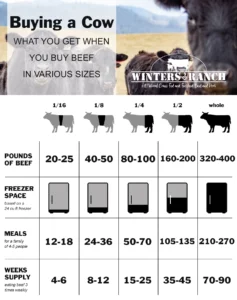 But plant-based agriculture can kill hundreds of small animals per acre per year.
But plant-based agriculture can kill hundreds of small animals per acre per year.
His research went on to show that to produce protein from grazing beef, cattle are killed. One death delivers on average across Australia’s grazing lands a carcass of about 288 kilograms containing approximately 68% boneless meat which, at 23% protein, equals 45 kilograms of protein per animal killed. Put in terms of lives lost to produce food, this translates to 2.2 animals killed for each 100 kilograms of usable animal protein produced.
On the other hand, 100 mice are killed per hectare per year (500/4 X 0.8) to grow grain. At average yields of about 1.4 tonnes of wheat/ha, with 13% of the wheat representing usable protein, this equates to at least 55 sentient animal lives lost to produce 100 kilograms of usable plant protein. That’s 25 times more killings than to produce the same amount of rangeland beef.
The study concluded that producing wheat and other grains to serve a vegetarian/vegan diet results in at least 25 times more sentient animals being killed per kilogram of usable protein, more environmental damage, and a great deal more animal cruelty.
Of course, this isn’t an argument to ditch plant foods altogether. It’s about being aware that “plant-based” doesn’t automatically mean “death-free.”
Why This Matters for Ethical Eating
For many vegans and vegetarians, minimizing harm to animals is a core motivator. But if the goal is to cause the least amount of suffering, the conversation needs to be broader than just avoiding meat.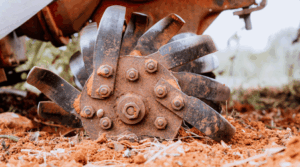
Here’s the tough truth: Modern agriculture is built on systems that harm animals, regardless of what’s being grown. The question isn’t whether animal deaths occur; it’s how many, and what kinds of deaths they are.
Some things to think about:
- Scale matters. Supporting small, regenerative farms causes far fewer wildlife deaths than buying from giant monocrop operations.
- Crop choice matters. Some crops require less pesticide use, fewer field passes with machinery, and smaller land footprints.
- Local ecosystems matter. In some areas, grazing animals like cows and sheep actually enhance biodiversity when managed properly.
In short, ethical eating isn’t as simple as “meat = bad, plants = good.” It’s about understanding the entire food system from soil to plate.
So…What Can We Do About It?
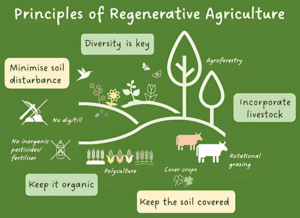
It’s time to look toward regenerative, animal-based farming practices.
Regenerative agriculture is the single best thing you can do for the health of the planet, the carbon cycle on the planet, and it saves the most lives.
Unlike monocropping, regenerative farming restores the soil, sequesters carbon, supports biodiversity, and creates habitats where wildlife can thrive. Well-managed, grass-fed and grass-finished animals aren’t the problem; they’re a critical part of the solution.
Here’s why regenerative, animal-based eating is different:
- Animals are rotated across the land, mimicking natural herd movements that fertilize the soil and stimulate grass growth.
- Carbon is pulled out of the atmosphere and stored in healthy, living soils.
- Wildlife corridors are maintained and often expanded, encouraging a rich web of life around the farms.
- No pesticides, herbicides, or synthetic fertilizers are needed — the animals create a closed, healthy nutrient cycle.
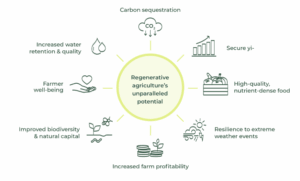
Choosing meat from grass-fed, grass-finished, pasture-raised animals raised on regenerative farms means you’re supporting a food system that actually heals the environment, not destroys it. It also means fewer overall animal deaths, stronger ecosystems, and more nutritious food for your body.
As Dr. Paul Saladino puts it, “Eating well-raised meat is the most vegan thing you can ever do.” It’s a bold statement, but once you start to unpack the reality behind modern agriculture, it makes a lot of sense.
Balance is key. No one is perfect. The goal isn’t purity, it’s progress. Every choice you make with greater awareness is a step toward a cleaner, more compassionate living path.
It’s easy to think of food choices in black-and-white terms: meat kills animals, plants don’t. But real-world agriculture shows us that every calorie comes at a cost.
Understanding the hidden cost of monocrop agriculture doesn’t mean giving up on plants and vegetables altogether. It means making more informed choices that align with your values, recognizing that there’s no such thing as a “perfect” diet, only more thoughtful ones. If you truly care about the health of animals, the planet, and yourself, the best step you can take isn’t necessarily cutting out meat, it’s choosing better meat.



